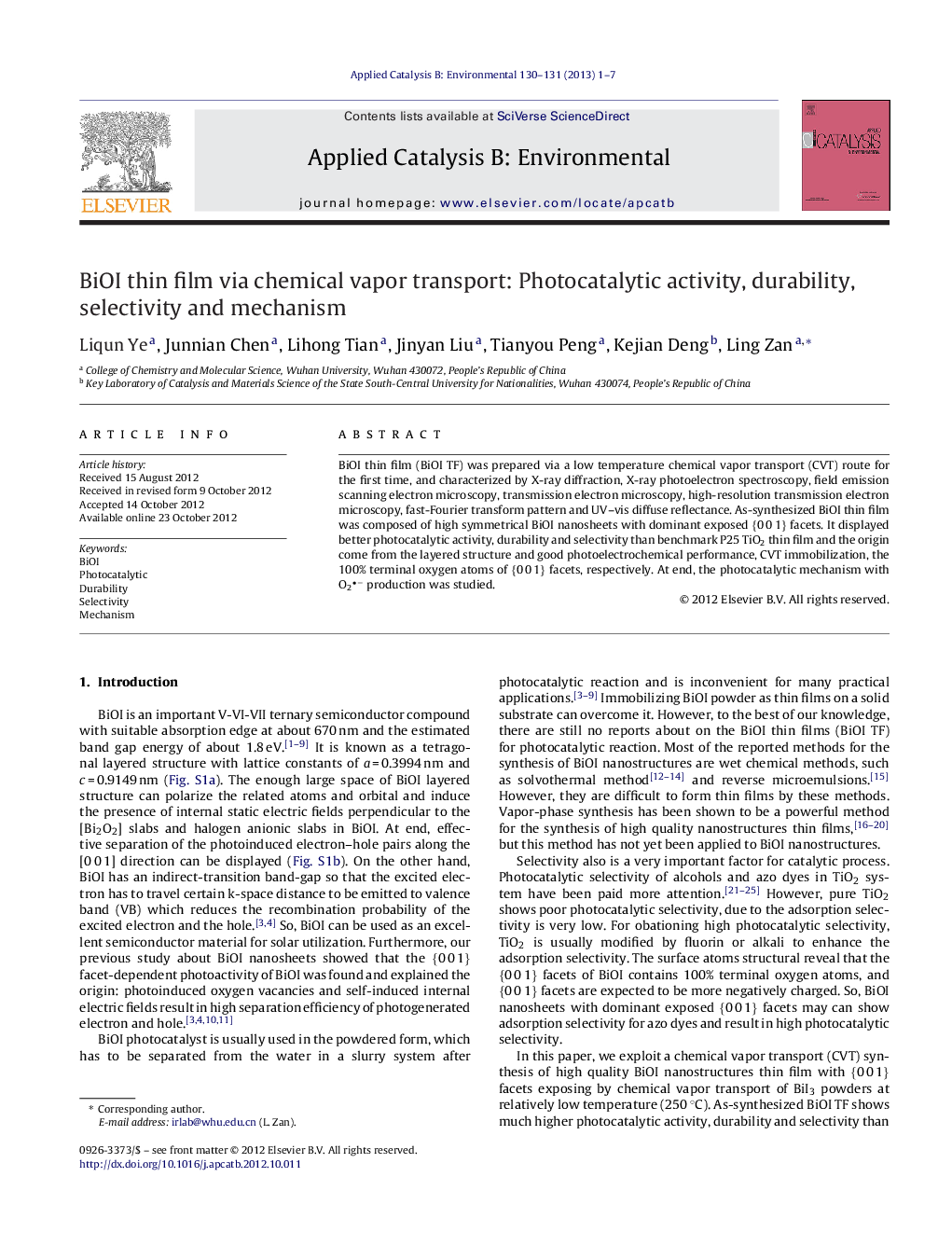| کد مقاله | کد نشریه | سال انتشار | مقاله انگلیسی | نسخه تمام متن |
|---|---|---|---|---|
| 45809 | 46423 | 2013 | 7 صفحه PDF | دانلود رایگان |

BiOI thin film (BiOI TF) was prepared via a low temperature chemical vapor transport (CVT) route for the first time, and characterized by X-ray diffraction, X-ray photoelectron spectroscopy, field emission scanning electron microscopy, transmission electron microscopy, high-resolution transmission electron microscopy, fast-Fourier transform pattern and UV–vis diffuse reflectance. As-synthesized BiOI thin film was composed of high symmetrical BiOI nanosheets with dominant exposed {0 0 1} facets. It displayed better photocatalytic activity, durability and selectivity than benchmark P25 TiO2 thin film and the origin come from the layered structure and good photoelectrochemical performance, CVT immobilization, the 100% terminal oxygen atoms of {0 0 1} facets, respectively. At end, the photocatalytic mechanism with O2− production was studied.
As-synthesized BiOI TF was prepared via a low temperature chemical vapor transport route, and composed of high symmetrical BiOI nanosheets with dominant exposed {0 0 1} facets. It displayed better photocatalytic activity, durative and selectivity. Photocatalytic mechanism results indicated that O2− and h+ are the main active species under high-pressure Xenon lamp irradiation. And corresponding reformed CBM photocatalytic mechanism was suggested.Figure optionsDownload as PowerPoint slideHighlights
► This paper firstly reported chemical vapor transport route to prepare BiOI thin film.
► This paper firstly reported the photocatalytic selectivity of BiOI.
► Possible reformed CBM photocatalytic mechanism was suggested.
Journal: Applied Catalysis B: Environmental - Volumes 130–131, 7 February 2013, Pages 1–7